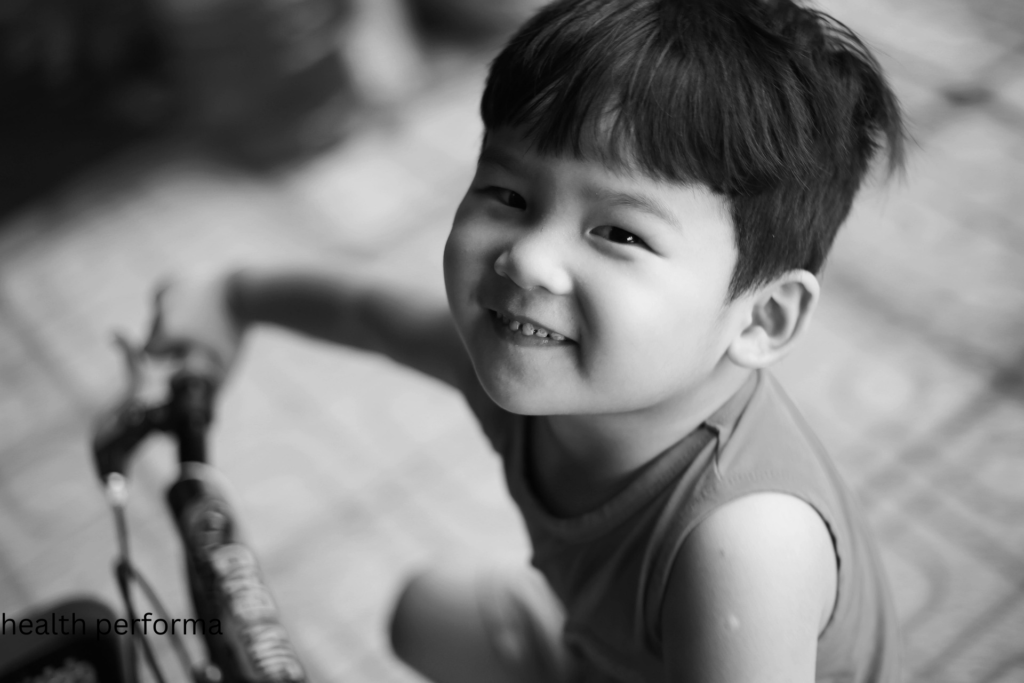Yoga is a journey of self-discovery, flexibility, and mindfulness. Among the foundational poses that every yogi learns early on is Balasana, or Child’s Pose. This restorative posture is known for its calming effects, making it a favorite for beginners and seasoned practitioners alike. However, did you know that there are advanced Child’s Pose variations that can take your practice to the next level? These variations not only deepen your stretch but also challenge your balance, flexibility, and focus.
In this comprehensive guide, we’ll explore advanced Child’s Pose variations, their benefits, and how to incorporate them into your yoga routine. Whether you’re looking to enhance your practice or simply add variety to your sessions, these variations will help you unlock new levels of relaxation and strength.
Table of Contents
What is Child’s Pose (Balasana)?
Child’s Pose, also known by its Sanskrit name Balasana, is a foundational yoga posture that provides a gentle stretch to the back, hips, and thighs while promoting relaxation and grounding. This restorative pose is often used in yoga sequences as a resting position, allowing practitioners to catch their breath, refocus, or relieve tension during more strenuous practices.
The pose is named “Balasana” from the Sanskrit words “bala,” meaning “child,” and “asana,” meaning “pose.” The name reflects the way a child might naturally rest—curled up in a position that is soothing and comforting.
Key Characteristics of Child’s Pose:
- Type of Pose: Restorative and grounding
- Primary Benefits: Stretches the back, hips, and thighs; promotes relaxation
- Difficulty Level: Beginner
- Primary Target Areas: Lower back, hips, thighs
How to Perform Child’s Pose (Balasana):
- Begin on Your Hands and Knees: Start in a tabletop position, with your wrists under your shoulders and your knees directly under your hips.
- Knees Wide or Together: You can choose to bring your knees together or keep them wide apart, depending on what feels most comfortable for you. For a deeper hip stretch, keep your knees apart and big toes touching, forming a “V” shape with your legs. For a more neutral position, bring the knees together.
- Lower the Hips Back: As you exhale, gently lower your hips back toward your heels, bringing your chest to rest between your thighs. If your knees are wide, your chest will drop between your legs.
- Extend the Arms or Relax Them by Your Side: You can choose to extend your arms out in front of you, palms facing down, for a stretch through the shoulders and arms. Alternatively, you can rest your arms alongside your body, with your hands near your feet, for a more restful variation.
- Rest the Forehead on the Mat: Allow your forehead to rest gently on the mat. If your forehead doesn’t comfortably reach the mat, you can use a yoga block, bolster, or blanket for support.
- Hold and Breathe: Stay in Child’s Pose for as long as it feels comfortable, focusing on deep, slow breaths. As you inhale, feel your back expand, and as you exhale, allow your body to sink deeper into the pose.
- To Exit the Pose: Press your palms into the mat and slowly rise back up into a seated or tabletop position.
Benefits of Child’s Pose (Balasana):
- Stretches the Lower Back and Spine: Child’s Pose gently elongates the spine, helping to relieve tension and tightness in the lower back. It’s particularly effective for people who experience back pain or discomfort due to sitting for long periods.
- Opens the Hips: The pose offers a gentle stretch to the hips, which can often become tight due to sedentary lifestyles or prolonged sitting.
- Promotes Relaxation: As a restorative pose, Child’s Pose encourages deep breathing and relaxation. It calms the mind and body, making it an excellent pose for stress relief or moments of anxiety.
- Lengthens the Thighs and Knees: Child’s Pose provides a gentle stretch to the thigh muscles, particularly the quadriceps, and helps improve knee flexibility.
- Increases Body Awareness: By drawing attention inward and focusing on the breath, Child’s Pose enhances body awareness and mindfulness.
- Relieves Neck and Shoulder Tension: By resting the forehead on the mat and allowing the shoulders to relax, Child’s Pose can help release tension in the neck and upper back.
Variations and Modifications of Child’s Pose:
- Supported Child’s Pose: For additional support, you can place a bolster, folded blanket, or cushion under your chest or forehead to make the pose more restorative.
- Extended Child’s Pose (Uttana Balasana): In this variation, keep the arms extended forward with the palms pressing into the mat. This version provides a deeper stretch for the shoulders and arms.
- Wide-Knee Child’s Pose: Widening the knees can provide a deeper stretch to the inner thighs and groin while creating more space for the torso to rest comfortably.
- Child’s Pose with a Twist: You can add a gentle spinal twist by walking your hands to one side of the mat, creating a lateral stretch for the opposite side of your torso.
Precautions:
Avoid Child’s Pose if you have severe lower back injuries or are experiencing acute pain.
If you have knee injuries or discomfort, avoid sitting back too deeply on your heels, or place a blanket or cushion between your thighs and calves for added support.
For those with limited flexibility in the hips or lower back, consider using props like bolsters or yoga blocks to make the pose more accessible.
Why Explore Advanced Child’s Pose Variations?
Exploring advanced Child’s Pose variations offers several benefits:
- Deeper Stretch: These variations target muscles and joints more intensely, enhancing flexibility.
- Improved Balance: Some variations require greater stability, helping you develop better balance.
- Enhanced Focus: Advanced poses demand mindfulness, improving your concentration and mental clarity.
- Variety: Adding variations keeps your practice fresh and engaging.
Now, let’s dive into some of the most effective advanced Child’s Pose variations.
1. Extended Child’s Pose
The Extended Child’s Pose is a simple yet powerful variation that stretches the spine and shoulders.
How to Perform
- Begin in the basic Child’s Pose position.
- Walk your hands forward, extending your arms as far as possible.
- Keep your hips grounded and your forehead resting on the mat.
- Hold the pose for 5-10 breaths, feeling the stretch along your spine and shoulders.
Benefits
- Stretches the spine, shoulders, and arms.
- Relieves tension in the upper back.
- Promotes relaxation and stress relief.
2. Thread the Needle Pose
Thread the Needle Pose is a dynamic variation that targets the shoulders and upper back.
How to Perform
- Start in Child’s Pose.
- Slide your right arm under your left arm, palm facing up.
- Rest your right shoulder and cheek on the mat.
- Hold for 5-10 breaths, then switch sides.
Benefits
- Relieves tension in the shoulders and upper back.
- Improves spinal mobility.
- Enhances relaxation.
3. One-Arm Extended Child’s Pose
This variation adds a twist to the traditional Child’s Pose, stretching the side body and improving balance.
How to Perform
- Begin in Child’s Pose.
- Extend your right arm forward and your left arm to the side, creating a T-shape.
- Keep your hips grounded and your forehead resting on the mat.
- Hold for 5-10 breaths, then switch sides.
Benefits
- Stretches the side body and obliques.
- Improves balance and coordination.
- Enhances focus and mindfulness.
4. Wide-Knee Child’s Pose
The Wide-Knee Child’s Pose is a deeper variation that stretches the inner thighs and hips.
How to Perform
- Start in Child’s Pose but widen your knees as far as comfortable.
- Extend your arms forward and lower your torso to the mat.
- Rest your forehead on the ground and breathe deeply.
Benefits
- Stretches the inner thighs and hips.
- Relieves tension in the lower back.
- Promotes relaxation and stress relief.
5. Revolved Child’s Pose
The Revolved Child’s Pose adds a gentle twist, targeting the spine and improving flexibility.
How to Perform
- Begin in Child’s Pose.
- Place your right hand on your left heel and your left hand on your right heel.
- Gently twist your torso to the right, looking over your shoulder.
- Hold for 5-10 breaths, then switch sides.
Benefits
- Stretches the spine and improves flexibility.
- Relieves tension in the lower back.
- Enhances relaxation and focus.
6. Supported Child’s Pose
The Supported Child’s Pose uses props to deepen the stretch and enhance relaxation.
How to Perform
- Start in Child’s Pose.
- Place a bolster or pillow under your torso for support.
- Extend your arms forward and rest your forehead on the bolster.
- Hold for 5-10 breaths, feeling the stretch in your spine and hips.
Benefits
- Deepens the stretch in the spine and hips.
- Enhances relaxation and stress relief.
- Ideal for restorative yoga practices.

7. Dynamic Child’s Pose
The Dynamic Child’s Pose adds movement to the traditional posture, increasing flexibility and circulation.
How to Perform
- Begin in Child’s Pose.
- Inhale as you lift your hips and extend your arms forward.
- Exhale as you lower your hips and bring your arms back to your sides.
- Repeat for 5-10 breaths, moving with your breath.
Benefits
- Increases flexibility and circulation.
- Enhances relaxation and mindfulness.
- Adds variety to your practice.
8. Side Stretch Child’s Pose
The Side Stretch Child’s Pose targets the side body and improves balance.
How to Perform
- Start in Child’s Pose.
- Extend your right arm to the side, reaching toward the left.
- Keep your hips grounded and your forehead resting on the mat.
- Hold for 5-10 breaths, then switch sides.
Benefits
- Stretches the side body and obliques.
- Improves balance and coordination.
- Enhances focus and mindfulness.
9. Elevated Child’s Pose
The Elevated Child’s Pose uses props to elevate the hips, deepening the stretch and enhancing relaxation.
How to Perform
- Start in Child’s Pose.
- Place a block or bolster under your hips for elevation.
- Extend your arms forward and rest your forehead on the mat.
- Hold for 5-10 breaths, feeling the stretch in your spine and hips.
Benefits
- Deepens the stretch in the spine and hips.
- Enhances relaxation and stress relief.
- Ideal for restorative yoga practices.
10. One-Legged Child’s Pose
The One-Legged Child’s Pose is a challenging variation that targets the hips and improves balance.
How to Perform
- Begin in Child’s Pose.
- Extend your right leg back, keeping your hips grounded.
- Rest your forehead on the mat and extend your arms forward.
- Hold for 5-10 breaths, then switch sides.
Benefits
- Stretches the hips and thighs.
- Improves balance and coordination.
- Enhances focus and mindfulness.
Tips for Practicing Advanced Child’s Pose Variations
- Listen to Your Body: Avoid pushing yourself too hard. Modify poses as needed to prevent injury.
- Use Props: Props like blocks, bolsters, and straps can help you achieve proper alignment and deepen your stretch.
- Breathe Deeply: Focus on your breath to enhance relaxation and mindfulness.
- Practice Regularly: Consistency is key to mastering advanced variations.
Conclusion
Exploring advanced Child’s Pose variations is a fantastic way to deepen your yoga practice and unlock new levels of flexibility, balance, and relaxation. Whether you’re a beginner or an experienced yogi, these variations offer something for everyone. By incorporating them into your routine, you can enhance your physical and mental well-being while keeping your practice fresh and engaging.
Remember, yoga is a personal journey. Take your time, listen to your body, and enjoy the process. With dedication and mindfulness, you’ll soon master these advanced Child’s Pose variations and experience their transformative benefits.

